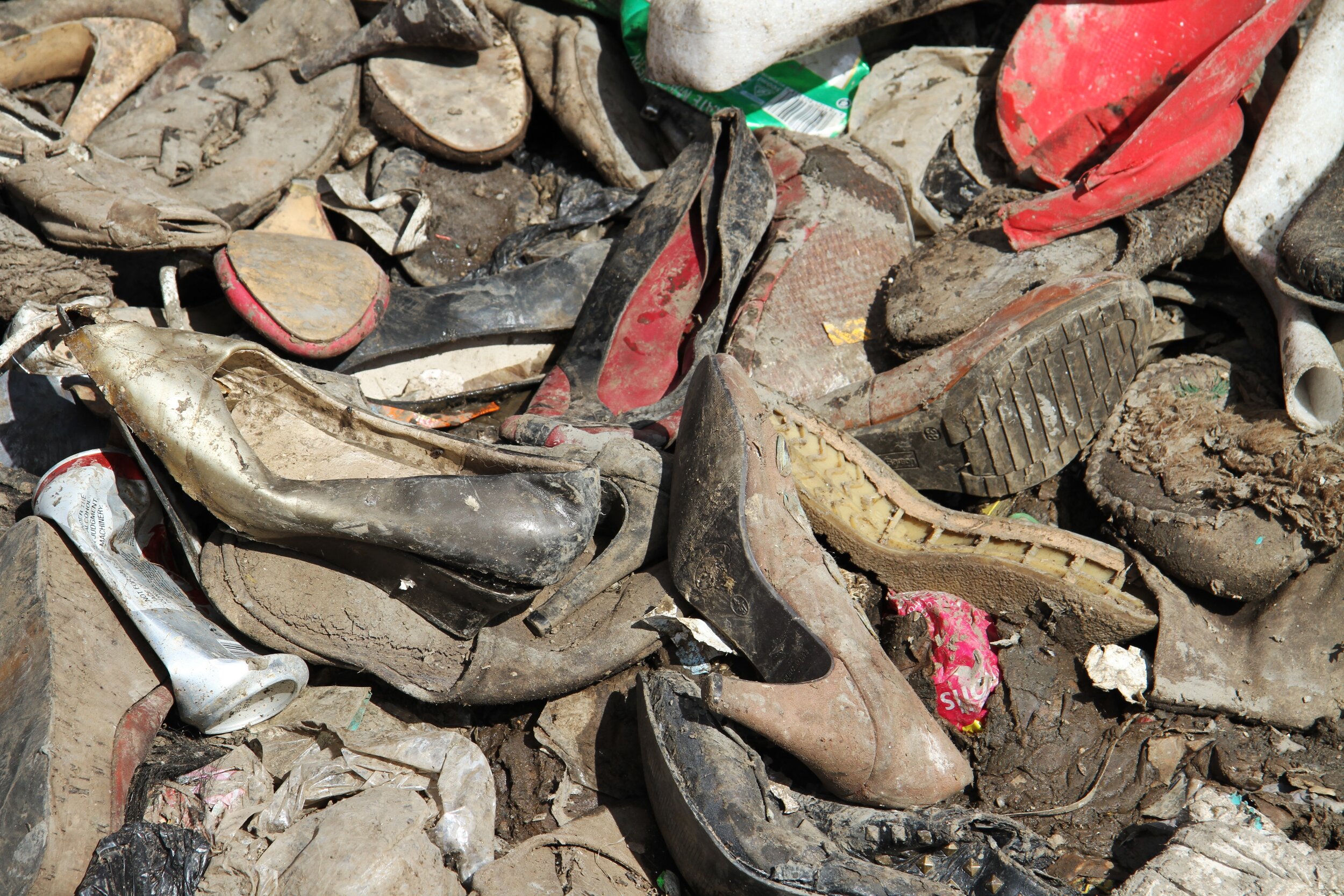
Background
The world is producing, consuming, and throwing away more clothes than ever before. Clothing production doubled from 2000 to 2014, with more than 150 billion garments produced annually. Europeans throw away 2 million tonnes of textiles each year. Every second, the equivalent of one garbage truck of textiles is landfilled or burned.
Many of us donate our unwanted clothes to charity shops and clothing collection banks - but do we really know what happens to them then?
Globally, only 30% of collected clothing are resold on domestic markets, due to poor quality and low re-sale value. The rest are baled and sold to textile merchants who ship them overseas to Sub-Saharan Africa to sell in countries like Kenya, Ghana and Senegal.
While exporting our used clothing to the Global South increases the life span of garments, provides access to cheap clothing for low income communities, and creates new local economies, not all of the impacts are positive.
The influx of vast quantities of cheap second-hand clothes from the West has largely killed off once vibrant local textile industries, drastically reducing the numbers of people employed in textile production. Kenya’s own textile industry employed over half a million people a couple of decades ago, from cotton farmers to weavers to tailors – today that number is less than 20,000. In 2018, Rwanda became the first country in East Africa to impose a ban on the import of second hand clothes, opting to prioritise the recovery of its own textile industry.
Dandora Dumpsite, Nairobi. Photo: Caitriona Rogerson
The environmental cost is also stark. In addition to the increased carbon footprint of shipping used clothing across the globe, only 70% of imported garments are can actually be resold in the host country. Two thirds of the remainder are cascaded to lower-value goods and one third is dumped.[3] Receiving countries often lack adequate waste & recycling infrastructure to deal with textiles, and so the West’s unwanted garments ultimately end their lives in overflowing landfill sites and blocked waterways in the Global South.
Dandora dumpsite. Photo: Caitriona Rogerson
As long as we continue to buy and discard clothes at current rates, we will continue to shift the burden of our fashion waste to countries with the least capacity to deal with it.
We need to radically transform our fast fashion economy in order to improve clothing design, collection, and reprocessing in order to promote a circular economy rather than a linear system of extraction, consumption and waste.
We cannot export our way out of our fast fashion addiction - we need to #SlowDownFashion.
Think before you buy.

Mitumba
In Kenya, ‘mitumba’ is the term used for second-hand clothing imported from abroad.
Private textile recycling companies collect donated textiles from charities and textile recycling bins in Western countries, bale them and sell via merchants to countries in the Global South, where they are purchased for resale.
Over 140,000 tonnes of used clothing are imported into Kenya via the port of Mombasa each year, mainly from Europe, the US and Canada. That is the equivalent of 6,000 40ft shipping containers of textiles, each containing 550 bales of second-hand clothes.
Each bale of mitumba weighs 45kg and range in price from the equivalent of €100 up to €400. Bales are graded according to quality, with A-rated bales containing clothes that are in near-new condition, to D-rated bales which are rags. Despite the grading system, quality varies, and buyers do not know the condition of clothing contained in the bales until they are purchased.
According to buyers we interviewed, up to 50% of each bale is of such poor quality that it cannot be resold. These low-grade textiles are burned or landfilled.

Dandora Dumpsite
Sprawling over 30 acres just outside of Nairobi, Dandora dumpsite is East Africa’s biggest landfill site and among the largest in the world. Every single day, 2,000 tonnes of unsorted, unregulated waste from the city’s residents & businesses is dumped here. Up to 6,000 people make a living picking waste from the landfill site to sell, generating an income for over 3,000 families. Alongside waste pickers, thousands of marabou storks scavange on the dump.
Waste in Dandora is not organised and there is no segregation system. It is the dumping ground for everything from animal waste to hazardous chemicals, hospital waste and expired medicines, batteries, electronics, textiles and food waste.
Health problems are rife amongst the thousands of people living in the vicinity of Dandora. Respiratory illnesses, due to the burning of hazardous waste, are so widespread that Nairobi’s main hospital has its own dedicated unit caring for Dandora residents. Every day, hundreds of children pass through the dumpsite on their way to and from school. Children as young as 6 can be seen picking through waste in search of valuables.
An estimated 20 million kg of textile waste are landfilled each year in Nairobi alone.
Dandora was deemed full in 2001, yet continues to operate to this day.

